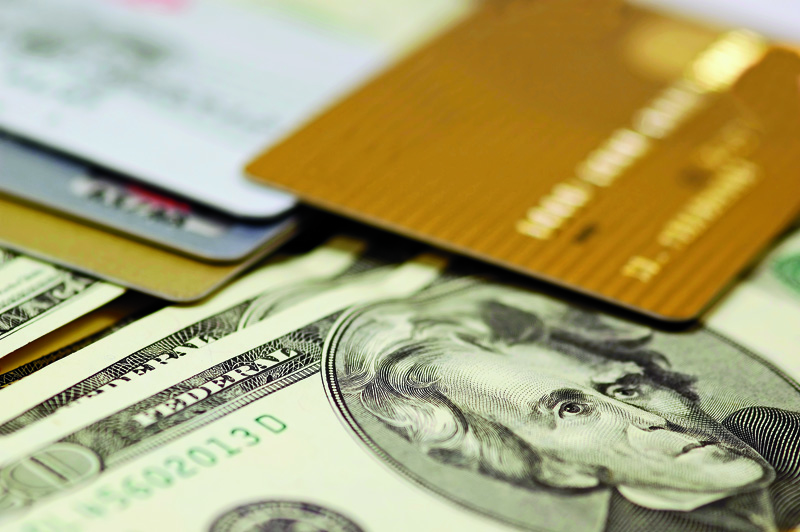No More Cash? The perks and potential pitfalls of a cash-less economy
By Gail Osten
September 2013 View more Finance
 I understand living without money, but living without cash is different. Will there be a time when we live totally without the green stuff?
I understand living without money, but living without cash is different. Will there be a time when we live totally without the green stuff?
The demise of the need to carry a wad of bills and coins happened gradually. For example, 15 years ago, I routinely packed $300 for a three-day business trip. Today, I bring along $50, with $40 usually unnecessary. My friends and I routinely slap down our respective credit cards to split dinner bills, unheard of ten years ago. This year, for the first time, a taxi driver swiped my credit card with a Square reader on his phone. An upscale grocery store in Chicago’s Western suburbs rejects cash payments, and now automatic electronic payments are part of our routine for paying bills which means we’re never late.
Age-based Use
Your age can have a significant bearing on whether you use cash or alternate payment methods to pay for items. My parents, who lived through the Depression, paid cash for everything, even when electronic means were available.
Our kids, now in their late 20s and early 30s, are whizzes at leaving home without any money in their pockets. While they carry a few bucks for incidentals, they prefer debit or credit cards for larger purchases and rewards credit cards for purchases like gas or groceries to get cash-back benefits. They have no trouble tracking purchases, with banks now helping to categorize where they’ve spent money. They subscribe to PayPal or other services and can bump phones to pay friends back when they have no cash on hand. So much for a friend forgetting an IOU.
Like many in the middle-aged crowd, I used checks. While they took some time to write, checks have a benefit over my debit card. After subtracting the expense and recording it in the checkbook, I could see the balance. It’s very tangible. I haven’t mastered how to see my balance on my phone, but will learn. Banks, of course, charge for both debit card and check transactions.
Rewards at a cost
While reward cards can offer some hefty benefits, cash back cards can encourage overspending. If you think you’ll be spending more than you can pay off by the due date, avoid using reward cards, which can feature higher APRs. Some reward cards may be better than others. Before you sign up, experts recommend you first check with your bank or card company and read the fine print to make sure it’s in your best interest.
Cash is still King
For some, cash in pocket simply disappears on who knows what. One study showed that when McDonald’s began accepting credit cards, the average purchase rose from $4.50 to $7.
For me, discretionary cash purchases are appealing because I feel in control. The Journal of Experimental Psychology studied the affect of the payment type on consumer behavior. They found the more transparent the payment type, the greater the aversion to spending, or higher the ‘pain of paying.’ Cash is viewed as the most transparent form of payment. In fact, The Salvation Army began using Square readers for donations in test markets, but many donors still enjoy that good feeling of throwing a few bucks or coins into the kettle.
However, the physical printing of cash is at an all time low, according to The New York Times. When credit card usage began in the early ‘70s, currency in domestic circulation totaled about 5% of GDP. In 2010, that figure is a mere 2.5%. So, the trajectory of plastic and electronic payment over cash is on a sharp upturn. It is doubtful that cash will ever completely disappear. Tips are probably still going to be made in cash and panhandlers with smart phones and Square readers will have difficulty convincing passersby that they are truly needy.


